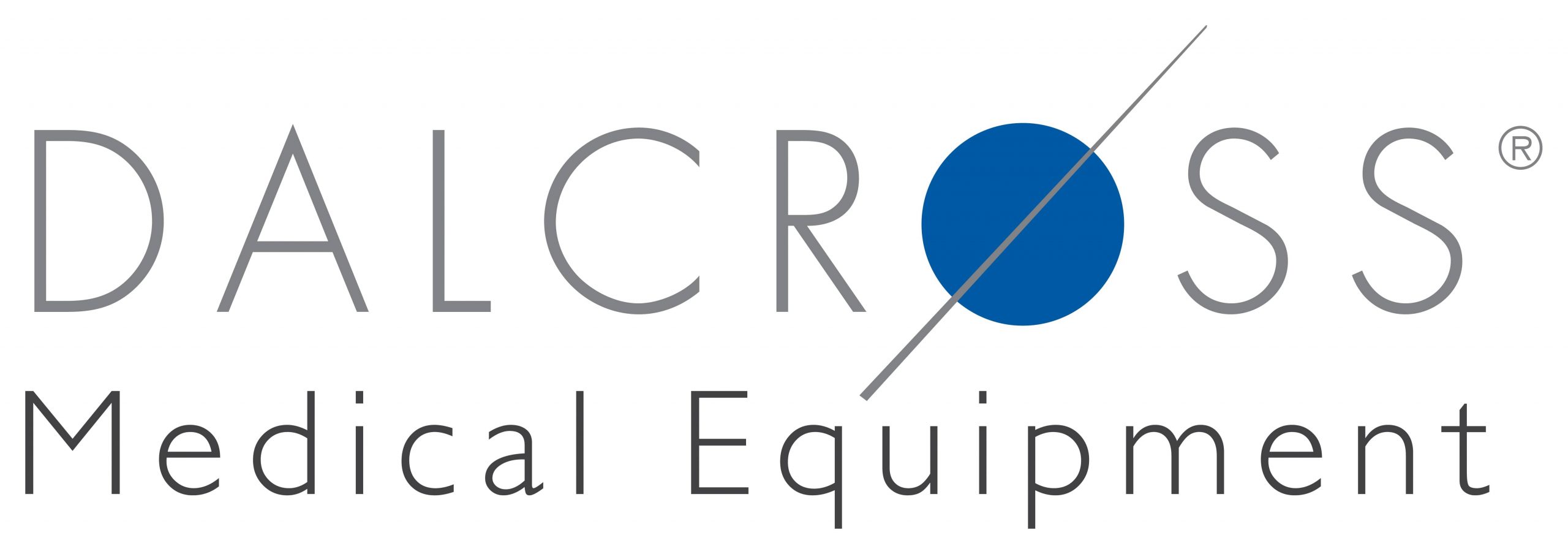We explored some of the statistics and data around healthcare workplace injuries caused by hazardous manual handling, and what can be done in hospitals, clinics and care facilities to improve the safety of our workers, and patients.
Over 12 months 256,800 females experienced work-related injuries or illness; 29% of which were employed in the Healthcare and Social Assistance industry
(Reference period July 2017 – June 2018)
Source: Australian Bureau of Statistics
Risks of Occupational Injury in Healthcare
NSW Nurses and Midwives’ association and WorkCover QLD report that hazardous manual tasks are the largest cause of occupational injury to nurses and midwives, and many injuries are preventable. Shoulder, back and musculoskeletal damage due to dangerous patient handling account for a significant number of irreversible injuries to healthcare workers.
- PSoft tissue injuries
- PBack and neck injuries
- PMuscle strains and sprains
- PAcute and chronic pain
- PNerve damage or compression
- PBone and joint injuries
- PLigament and tendon damage
Adding to the risks associated with handling patients are; shift work with long periods on your feet, fatigue, and poor workplace design which all contribute to the likelihood of sustaining injury.
Unfortunately many shoulder and back injuries sustained by nurses, assistants and midwives can lead to long-term or permanent disabilities
Identifying Hazards in Healthcare
A WorkSafe Victoria case study of the safe design of the new St John of God Hospital in Berwick, highlights the careful planning and consultation that went into creating an environment that was ergonomic and safer for staff and patients. As a result the Hospital won the WorkSafe Victoria 2018 OHS Achievement award.
- PStakeholders, HSRs, Staff and subject matter experts were all consulted
- PAn initial ‘mock up’ of a patient room was designed for workflow and scenario testing
- PStaff who would use these areas provided feedback to help identify possible design and safety issues
- POttoman style couches which double as beds for visitors, reducing trip hazards and the manual setup of sofa beds
- PIn-room overhead tracking to enable moving patients from bed to bathroom with minimal manual handling
- PElectronic bed movers
- PHeight adjustable workstations for safer working posture
Alter the workspace with ergonomic medical furniture
Whether embarking on an entirely new fit out and design, or upgrading and improving current systems, choose ergonomic furnishings and equipment that can limit hazardous manual handling, and reduce the risk of injury.
Lightweight Milano and Modena Patient Chairs
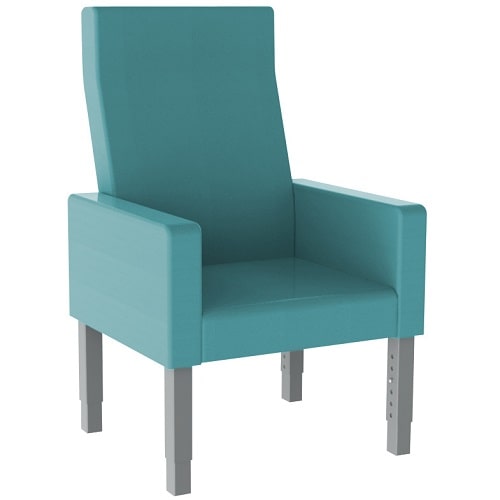
Modena Adjustable High Back Patient Chair
Safe working load 200kg

Bariatric Modena Adjustable Patient Chair
Safe working load 250kg
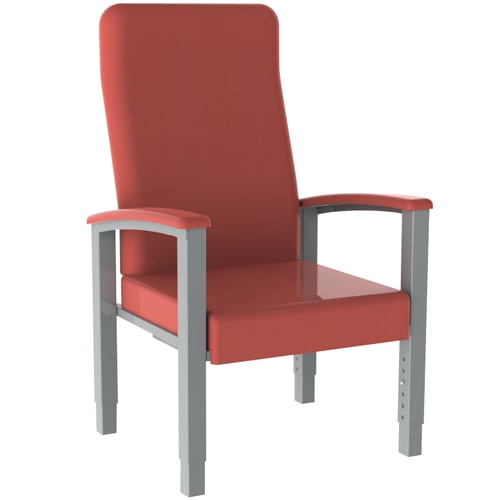
Milano Adjustable High Back Patient Chair
Safe working load 200kg
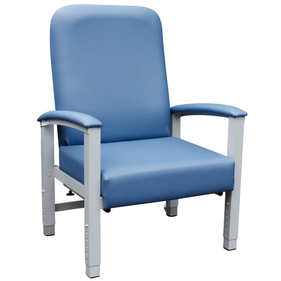
Bariatric Milano Adjustable Patient Chair
Safe working load 250kg
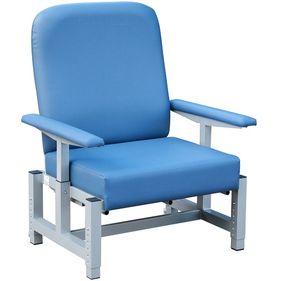
Bariatric High Back Drop Arm Chair
- PWith an aluminium frame, these chairs are about 50% lighter than steel frame chairs; but maintain safe working loads of 200-300kg depending on the model.
- POften patient chairs need to be pulled away from the wall before they can be tilted back to use the wheels. With this lightweight aluminum frame rather than heavy steel, the risk of injury when pulling the chair away from the wall is significantly reduced.
- PEasily height adjustable legs with a positive lock push-pin to find its next position without jamming
Load Reducing Linen Skips
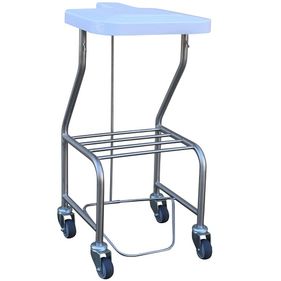
Single Pedal Operated Linen Skip-load reducing

Double Pedal Operated Linen Skip-load reducing
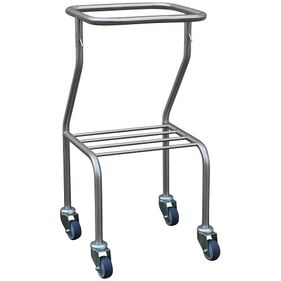
Single Linen Skip - load Reducing
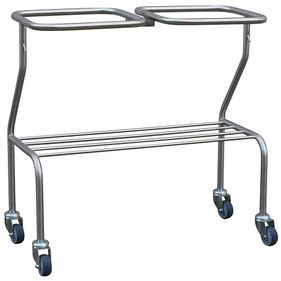
Double Linen Skip - load Reducing
- PThe design limits over-filling the linen bag, helping to prevent lifting injuries
- PElevated platform (single & double) with or without foot pedal operated lids
Relay Transfer Chair
The Safer Alternative to the wheelchair
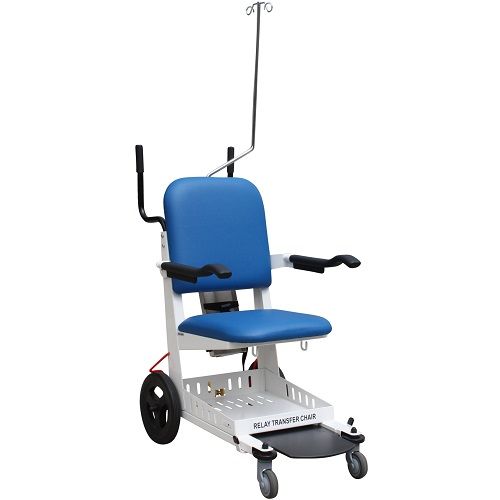
- PFor safe patient transfers within hospitals and care facilities.
- PFlip-back arms for side access Strong and stable steel frame - purpose built for hospitals
- PNon-folding frame, less likely to be removed from hospital grounds, reducing the issue of ‘missing’ wheelchairs
- PSafe working load 200kg
- PFoot operated braking system
- PSlide out footrest
- PEffortless maneuverability
- PCatheter bag hooks, IV Poles and Oxygen cylinder holder
San Fran Recliner Chairs
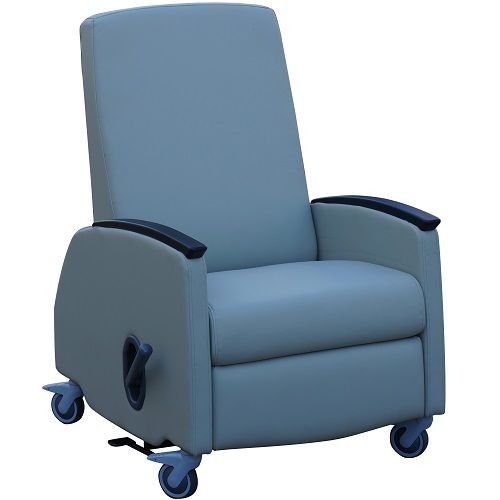
San Fran Recliner Chairs
Safe working load 227kg
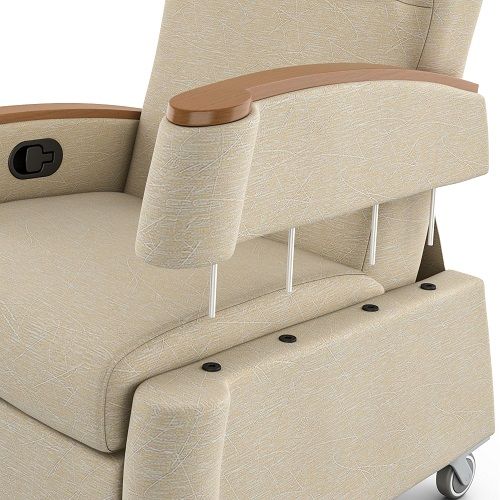
Bariatric San Fran Recliner Chairs
Safe working load 300kg
The common issue with recliners is that closing the footrest relies on sufficient force from the legs of the person in the chair. Where this presents a challenge for patients, rendering external assistance can cause staff to have to bend over and exert force in an unnatural manner, increasing the risk of injury to the healthcare worker
The leg rest handle is designed so it can be operated either in-chair or externally by a staff member
Optional fold down or removable armrests, to improve side access
Rear push handle and large individually locking wheels to make relocating the chair easier for staff
Slim E Drive Electric Stretcher
5th wheel motor drive for supreme maneuverability
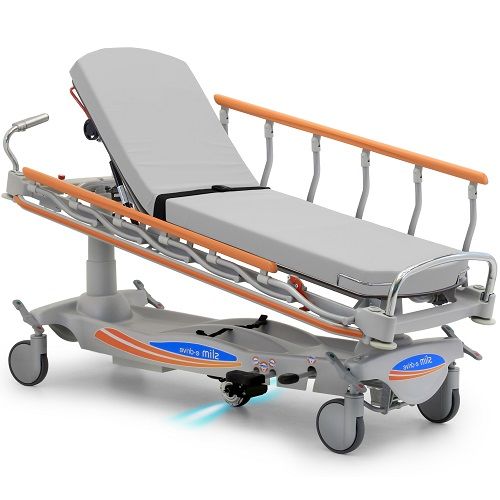
The Slim E-Drive Stretcher has been designed to be used by just one operator. The motorised 5th wheel and push-touch mechanism requires no effort for forward-backward and lateral movements.
This enables smooth patient transport with greatly increased maneuverability.
Safety and comfort for both staff and patients.
HPL Overbed Tables
Key Safety Features
Assisted height adjustment from 820mm to 1090mm, with just a single hand operation.
A lot of adjustable tables have a screw mechanism which requires two hands. One hand to loosen and tighten the key wheel, and the 2nd to adjust the height, then hold the table in position while retightening the key wheel.
While it doesn’t sound like much, performing this task repeatedly over long shifts and having to balance food and drink on the table at the same time, is a preventative and unnecessary strain on medical staff.
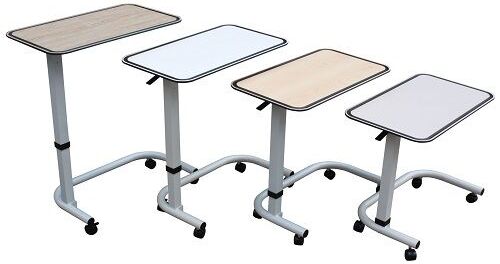
For over 40 years Dalcross Medical Equipment have been dedicated to helping healthcare workers improve patient care, comfort, staff safety, and facility appeal. We are an Australian manufacturer and importer of medical furniture, lighting, and medical equipment.
Time to upgrade tired furniture or fit out a new modern space?
WorkSafe Victoria A Guide to Designing Workplaces for Safer Handling of People for Health, Aged Care, Rehabilitation and Disability Facilities 2007
Report International Journal of Occupational Safety and Ergonomics 2000 Manual Handling Injuries in Healthcare workers N. Bewick D. Gardner

Ph: 02 4647 7777
Fax: 02 4647 8509
[email protected]
